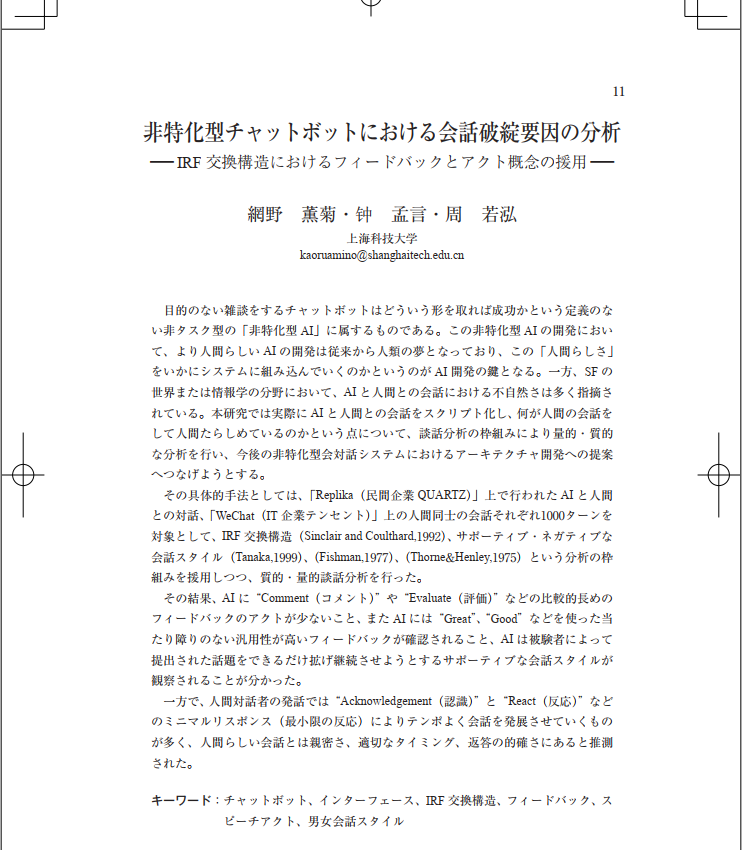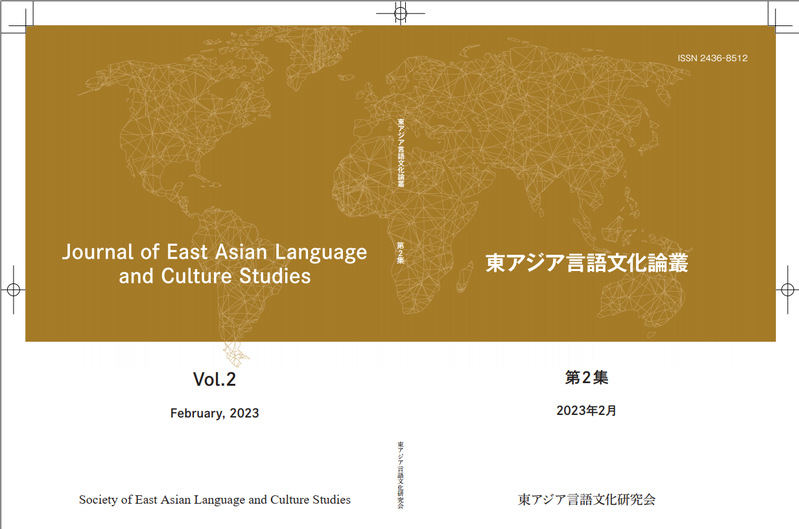Recently, Kaoru Amino, Teaching Associate Professor in the Institute of Humanities at ShanghaiTech University, has published her research in the Journal of East Asian Language and Culture Studies.

This journal is an annual periodical journal, published by Society of East Asian Language and Culture Studies, whose predecessor organization was started in 2000 by current committee, consist of the professor emeritus of Kyushu University, Incheon University, and other foreign universities.
The scope of this journal includes empirical study of Japanese linguistics, languages, and literature, though currently it is expanding its target of study towards other related field, such as comparative linguistics, 2nd language acquisition, as well as other languages as Chinese and Korean.

Information of Professor Amino's article is as follows:
Title: 「非特化型チャットボットにおける会話破綻要因の分析:IRF交換構造におけるフィードバックとアクト概念の援用」
Abstract:
Chatbots can be categorized as unsupervised AI, lacking the exact function of interaction or successful conversation. Numerous trials have been done to make the conversational characteristics of this unsupervised AI resemble those of human beings. The introduction of “humanity” into chatbot architecture is considered a key to developing this unsupervised AI.
The unnatural flow of conversation enabled by AI has been identified in the fields of science fiction and informatics. It has been described as “dialogue breakdown” by Higashinaka et al. (2016). This study aims to specify the discoursal element attributes of conversations between human beings, to provide some implications for chatbot architecture, from the perspective of discourse analysis.
Based on 1,000 turns extracted from WeChat (Tencent) and Replika (QUARTZ), respectively, some linguistic characteristics specific to each platform were analyzed from the perspective of discourse analysis.
Linguistic frameworks, such as the IRF exchange structure (Sinclair & Coulthard, 1992) and supportive and negative conversational style (Fishman, 1977; Tanaka, 1999; Thorne & Henley, 1975) were applied to analyze the data quantitatively and qualitatively.
The analyses clarified that long types of feedback in the form of “Comment” and “Evaluate” are less frequent in chatbot interlocutors. However, short feedback such as “Great” and “Good” are applicable to every situation and to a supportive conversational style. This style aims to continue and widen the topic submitted by the subject as far as possible and is observed more frequently in chatbot interlocutors.
Meanwhile, minimal responses in the form of “Acknowledgment” and “Reaction” are found more frequently in human interlocutors, enabling the conversational flow to develop at a moderate pace. Therefore, the results of this study imply that human-like conversation could rely on intimacy, adequate timing, and accuracy of replying.
Article link:
https://gitee.com/amino-shtu/the-analysis-of-conversational-breakdown-in-the-unsupervised-chatbot/raw/master/%E6%9D%B1%E3%82%A2%E3%82%B8%E3%82%A2%E8%A8%80%E8%AA%9E%E6%96%87%E5%8C%96%E8%AB%96%E5%8F%A2-0307%20(1).pdf
